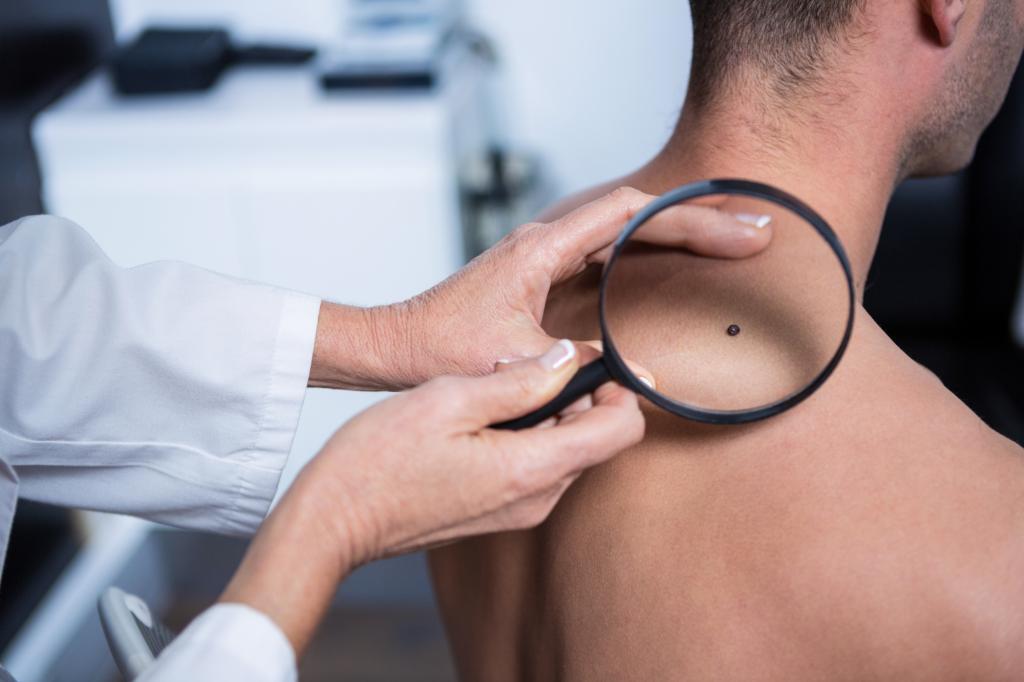

The melanocyte cells that are normally found in our bodies and give their color to the skin are called Ben (nevus), which are benign tumor tissues. Ordinary mites are unlikely to turn into cancer, but the cancer called melanoma, which can be fatal, can be misleading because of its type and appearance of a normal me. should be examined.
Dermoscopy (superficial microscopic examination of the skin) is a dermatological examination method used to diagnose dark spots on the skin. In order to examine the best possible appearance of the skin in diagnosing skin problems, strong magnification systems and polarized light are used.
Dermoscopy is used to see the details that cannot be seen on the surface with the naked eye by enlarging me. Moths recorded by dermoscopy can be compared with old records over time; thus, a small change before cancer formation can be detected, if there is a risky change, there is a chance to treat it early. The next step in suspicious lesions is to perform a biopsy to exclude or confirm cancer.
When examining the moles (including the back of the fingers and the back of the body) the following should be considered; ABCDE Rule;
A. (Asymmetry) Asymmetry; if one half of the lesion does not match the other,
B. (Border) Edge; If the edges are irregular,
C. (Color) Color; if the color distribution is not homogenous,
D. (Diameter) Diameter; If the size is larger than 6mm,
E. (Evolution) Development; is a change that occurs outside the natural course of a benign. It is important in terms of the risk of melanoma development, the onset of itching in my flat surface, the onset of itching and bleeding.
If a skin lesion is visibly changed or meets any of these criteria, it should be checked by a dermatologist.
Since malignant melanoma has the potential to be transformed into malignant skin cancer, the diagnosis and treatment of the diagnosis is very important. In patients with benign, kyriotherapy, electrocautery, surgery or laser treatments are applied. If there is a rapid change in color, shape and size in an existing one, there is a high probability of melanoma if it is itching, bleeding or burning. In this case, it should be taken and sent to pathological examination.